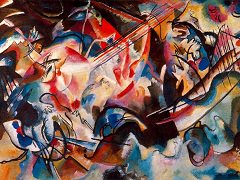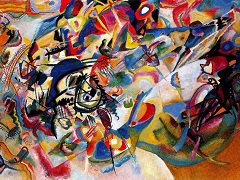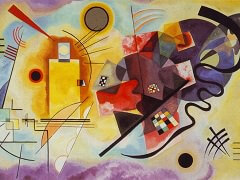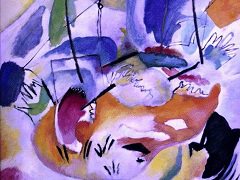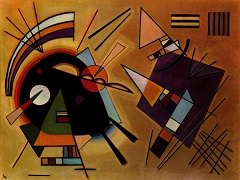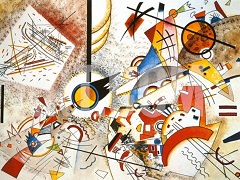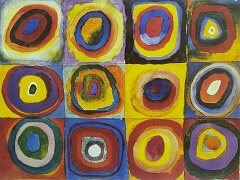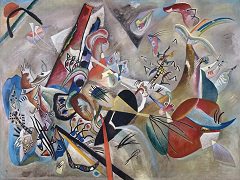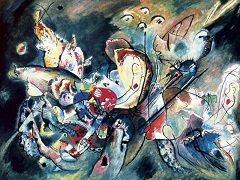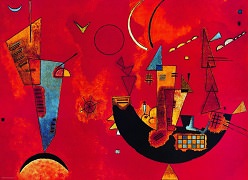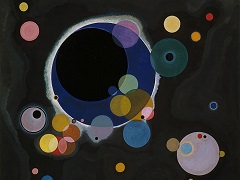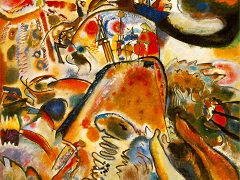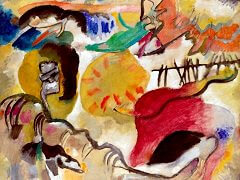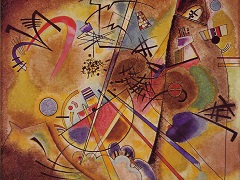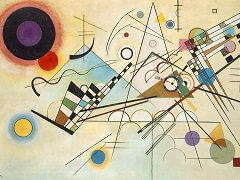Capricious, 1930 by Wassily Kandinsky
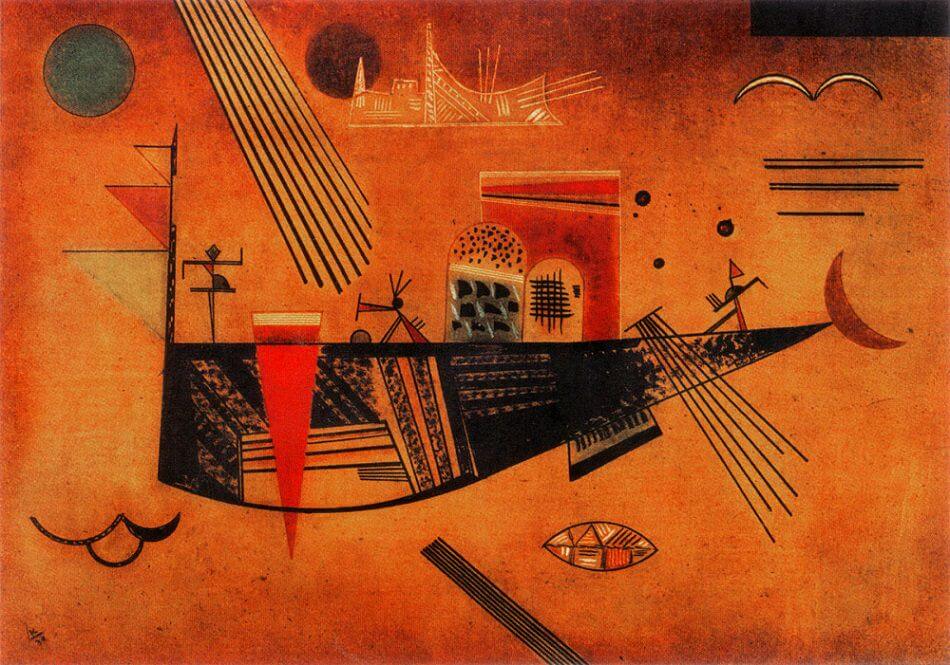
Considering the zealous engagement of Kandinsky's romantic soul in fulfilling his priestlike mission in the arts, it would appear understandable if there were no place for laughter or caprice. Yet, time and again, Kandinsky expressed his critical views in writing in a witty way, and in his paintings he quite often used humorous imagery. In fact, the capacity to twist words by giving them a variety of meanings and the ability to see and enjoy the other side of any given question were basic aspects of both Kandinsky's wit and his process of abstraction in painting. After his investigations into the nature and behavior of point, line, and plane, Kandinsky appears to have indulged in playing ironically with the elements that he had earlier so learnedly defined, thus proving once again that art is something beyond any applicable grammar.
Capricious, 1930 is a typical example of that style and that period. If one attempts to fathom its secrets, a simple statement like "a barge is floating," which seems to make sense, would, in fact, raise more questions than it would answer. Surely, the dominant form of the painting is not unlike some kind of nautical vessel. There are, in addition, a number of details which confirm that impression: the triangles of signal pennants on a mast at the left which, by their direction, would indicate a movement from left to right, and the motif of the oars on the right which also reinforces the idea of a boat. Moreover, it might appear plausible to consider the "fin" as a part of a ship, the sharp triangular form as the vertical keel of a sailboat, the dancing and gesticulating figures as the crew, and, finally, the superstructure on the deck as the captain's bridge. However, despite these observations and suggestions, this interpretation remains highly unsatisfactory because it disregards the abstract character of the painting and because all the elements of this imagery are of an equivocal nature, mcluding the ambiguous direction in which the ship seems to sail.
And does it really float? If so, on what? One would have to accept the elliptical form as the representation of a fish, the segments of circles as a geometrical configuration of waves. The floating birdlike form at the upper right might be a seagull. Yet inasmuch as the boat is not a boat and the area through which it moves is not water, the sky is not sky either. Out of this cloudless void a cluster of rays beams onto the "boat," skimming past some aerial castle.
The whole composition looks more like some "spaceship" floating in a firmament, with two suns, one green, the other gray, and a crescent moon which appears to be the figurehead of the vessel. In whimsical fashion Kandinsky thus created a phantasmagoric Cleopatra's barge drifting up the Nile: a salute to Schlemmer, an homage to Paul Klee.

